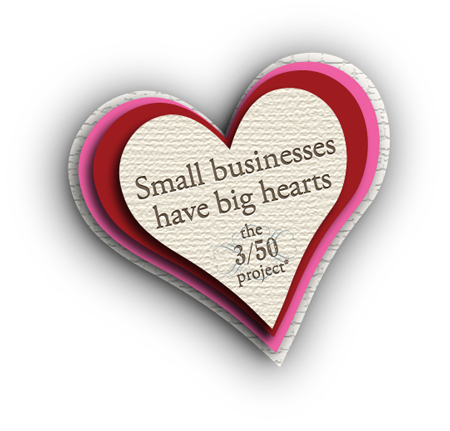What paint colors would you use on your walls if you were opening a new gift store? I am trying to come up with a good base color and then some accent colors.
MaryJo, there are several ways to approach this.
One is to consider the art of Feng Shui when choosing colors - I suggest the book 'Feng Shui for Retailers' by my friend and fellow speaker Linda Cahan.
Another is to consult a custom color specialist or a computer program to develop a custom color palette for your business - you can learn more about the psychology of color at the Pantone Color Institute. Pantone offers an excellent Corporate Identity program, as well.
I love the idea of creating your own custom color OR palette {combination} of colors, because it plays right into my theory of retail design:
I advise my clients to 'Tell their own story' through all avenues of their presentation. Start with your store name, logo, and mission statement, and develop a palette of colors that express and build your brand image. {Remember my post on how Gene Juarez Salons created their signature color palette from the natural shades of hair, skin, eyes, and lips?} You want to create an environment that is unique to you and your business, so that you set yourself apart from the competition. With this approach, you have the opportunity to surround your customers with your brand from the moment they walk in.
One is to consider the art of Feng Shui when choosing colors - I suggest the book 'Feng Shui for Retailers' by my friend and fellow speaker Linda Cahan.
Another is to consult a custom color specialist or a computer program to develop a custom color palette for your business - you can learn more about the psychology of color at the Pantone Color Institute. Pantone offers an excellent Corporate Identity program, as well.
I love the idea of creating your own custom color OR palette {combination} of colors, because it plays right into my theory of retail design:
I advise my clients to 'Tell their own story' through all avenues of their presentation. Start with your store name, logo, and mission statement, and develop a palette of colors that express and build your brand image. {Remember my post on how Gene Juarez Salons created their signature color palette from the natural shades of hair, skin, eyes, and lips?} You want to create an environment that is unique to you and your business, so that you set yourself apart from the competition. With this approach, you have the opportunity to surround your customers with your brand from the moment they walk in.
Take into account the mood you want to create in the space - how do you want your customers to feel, what effect do you want the environment to have on people in the space? What kind of 'gifts' will you be selling, and to whom? What makes your business different from others selling the same products? All of these facets play into the color, material, and style choices you make for your space design. Your choices express your brand image - and your store can be a 'living' image of your brand.
I just completed a quick interview with Yarn Market News magazine, and the subject was also on this subject: How can retailers chose & use color to their advantage? What I've shared with you here runs along the same lines as what I told the writer, Kristine, and what I'll share in my seminar at their conference in March. Color is a tool, and needs to relate to the other tools in your 'branding' toolbox. Yes, you can use current trending colors - but only as an easily-changed splash in a display area. {Think of them as an exclamation point!} Make your choices for permanent surfaces brand-centric in order to get the most leverage out of them.
I'd also suggest a Google search of 'color theory' and 'color psychology' - you will find a wealth of helpful tips for choosing colors for the many facets of your business, not just the walls!
Thanks for participating, MaryJo...
I'd also suggest a Google search of 'color theory' and 'color psychology' - you will find a wealth of helpful tips for choosing colors for the many facets of your business, not just the walls!
Thanks for participating, MaryJo...
Image Credits: color wheel from seanmarcellus.com; corporate color logos from Pantone.com















